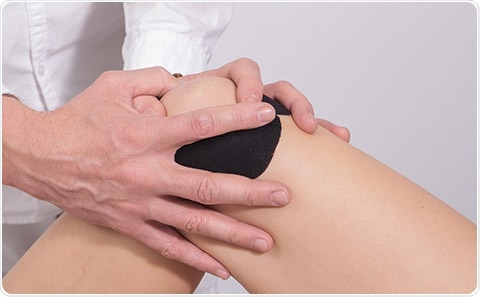Scientists from the University of Southampton have identified a novel means to create human cartilage tissue from stem cells. This process can lead the way for the progress of a crucial treatment for individuals with cartilage damage.

Image Credit: University of Southampton.
Cartilage functions as a shock absorber in joints; however, it is prone to damage because of day-to-day wearing away, or trauma from sports injuries and falls. The present standard surgical procedure to revive sites of damaged cartilage, employing cartilage cells, is not completely successful.
This is due to the survival of the repair tissue, created by cartilage cells at the region of damage, which decreases substantially after 5–10 years. Hence it is necessary to identify a novel process to powerful, lasting repair by implanting cartilage tissue, contrary to cartilage cells, at the area of damage.
Researchers from the Centre for Human Development, Stem Cells, and Regeneration anticipate that they might have the solution. The researchers created cartilage tissue in the lab by effectively differentiating embryonic stem cells into cartilage cells.
They later utilized these to create three-dimensional pieces of cartilage tissue without any natural or synthetic supporting materials. This is called the “scaffold-free” cartilage tissue engineering technique. The cartilage tissue created is mechanically and structurally similar to normal human cartilage with the capability to form a long-lasting and stable repair when compared to the current treatment options available to patients.
The scientists are the first to employ the scaffold-free technique to create cartilage tissue, which is scaled up over 1 mm without negatively impacting its mechanical and structural properties. The researchers anticipate that ultimately, after carrying out further analyses, the laboratory-generated tissue can be used in surgery to repair damaged cartilage on a daily basis.
This multidisciplinary research published in the Scientific Reports journal was headed by Dr. Franchesca Houghton and Dr Rahul Tare from the Faculty of Medicine at the University of Southampton.
This research is exciting as our ability to generate cartilage with properties akin to normal human cartilage has the potential to provide a robust tissue engineered product for cartilage repair.”
Dr Franchesca Houghton, Faculty of Medicine, University of Southampton
“This tissue-based approach of replacing ‘like-for-like’ has the potential to constitute a step-change improvement in current cell-based surgical approaches for repairing damaged cartilage and improve long-term patient outcomes,” says Dr. Tare.
Source:
Journal reference:
Griffith, L. A., et al. (2021) A scaffold-free approach to cartilage tissue generation using human embryonic stem cells. Scientific Reports. doi.org/10.1038/s41598-021-97934-9.